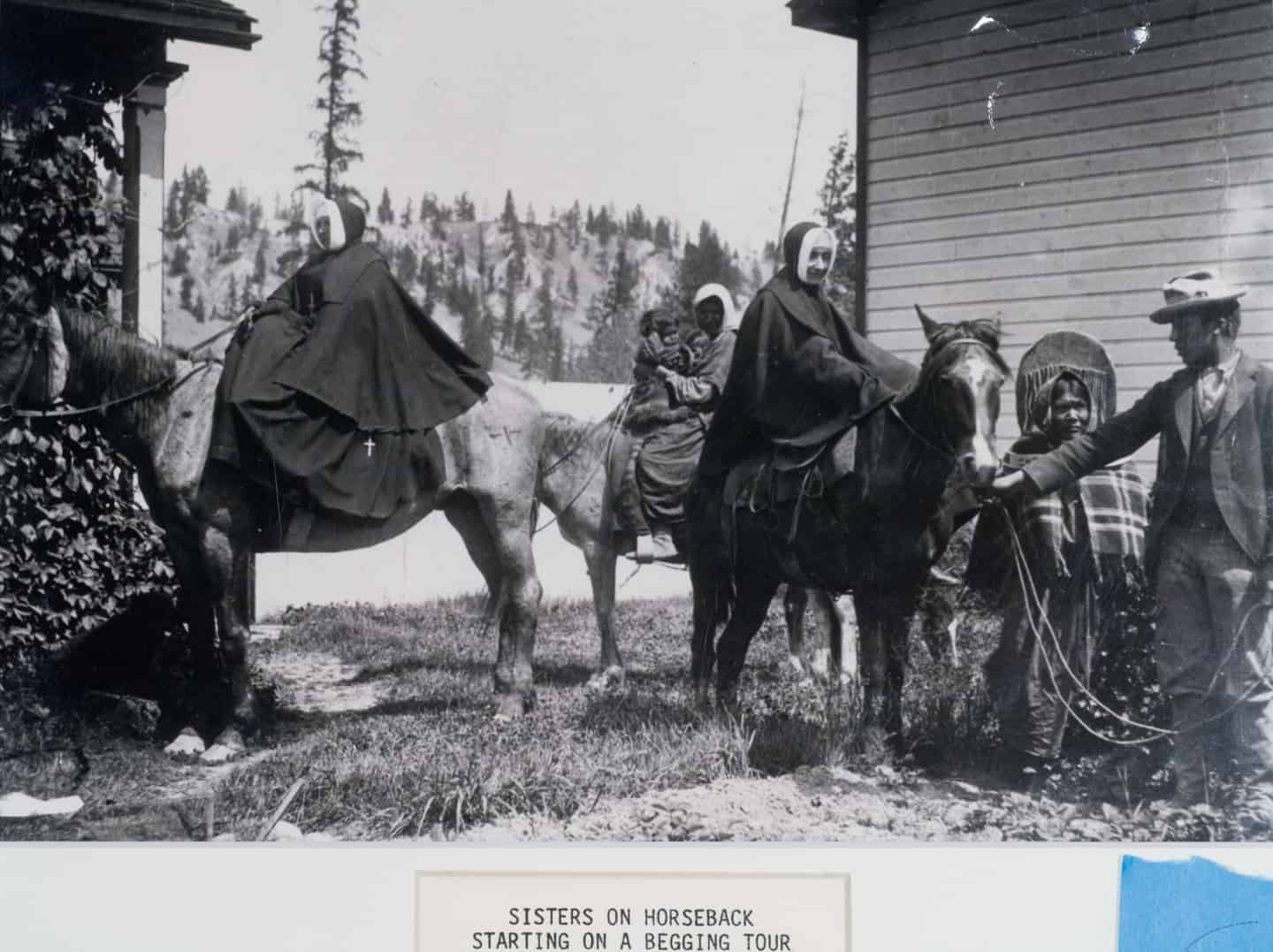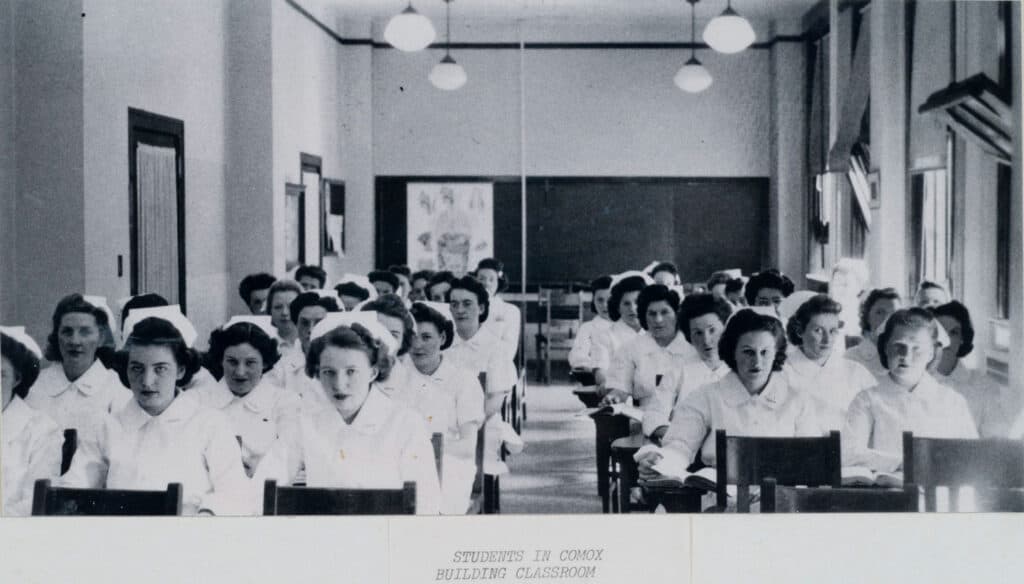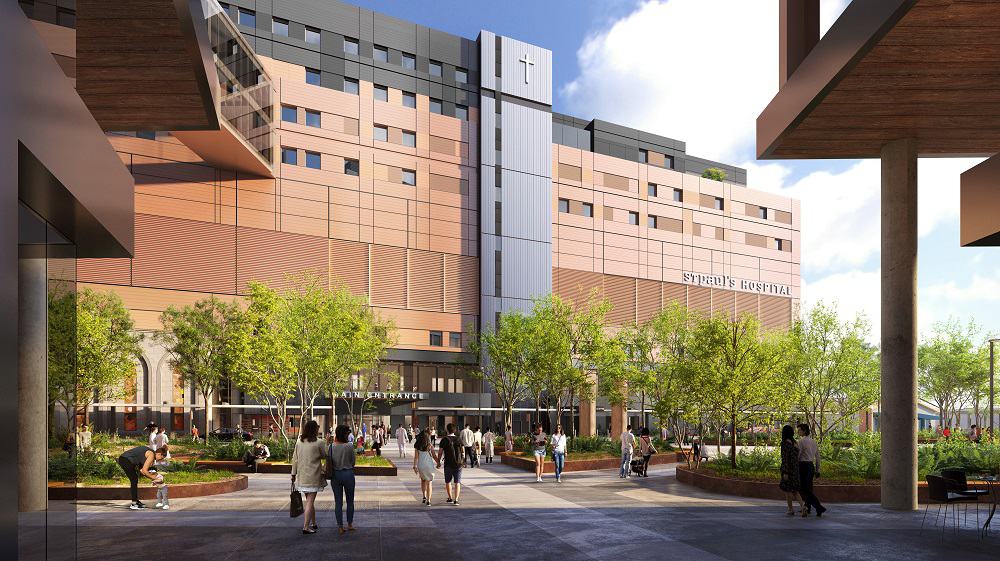Published Promise 2019
The story of fundraising at Providence Health Care (PHC) harkens back to when Vancouver was a fledgling coastal town on the edge of a vast wilderness, and when St. Paul’s was just a 25-bed “cottage” built alongside a trail to English Bay. But when it came to raising money to pay for the building, medicine, equipment, and staff, the determined nuns were forced to look further afield.
The intrepid women journeyed to remote fishing and mining settlements across the Pacific Northwest. Led by First Nations guides, they travelled on horseback and by canoe (in their nuns’ habits!) selling vouchers that workers could exchange for care if they were sick or injured. The fundraising trips were so successful, the Sisters made them annually. Not only was this an early form of medical insurance, it was an effective way to raise funds for the new hospital.
To this day, the exceptional care provided right across PHC is incumbent on compelling fundraising and generous donors. We are fortunate to have a dedicated and loyal community of supporters who drive the compassion and innovation that Providence is known for. Indeed, not only have they given, their leadership and influence have inspired countless others to give.
Family matters
As with most families, the legacy of leadership often spans the generations. The Providence family is no exception. Jim Pattison is part of this legacy with his historic $75 million gift in 2017. At the time, Pattison’s donation was the largest in Canadian history from an individual to a medical facility. In addition to his financial support, his gift sent a clear and compelling message that the time had come to transform health care in BC with the new St. Paul’s at the Jim Pattison Medical Centre. Pattison traces his giving to the values instilled by his parents and the importance of giving back to the community.
It’s not the dollar amount, he says: “It’s the participating that’s important. If a lot of people give a little, it still adds up to a lot.”
Pattison’s gift is one in a long tradition of prominent families sharing their good fortune with the communities we serve. Since the 1950s, the Woodwards, founders of Woodward’s department stores, have been generous benefactors and influencers, giving more than $2 million over the years. In 1966, to cite just one example, the Mr. and Mrs. P.A. Woodward’s Foundation provided much of the funding for St. Paul’s new intensive care unit, the first of its kind in Canada. That leadership spurred other families to help St. Paul’s evolve into the hospital we know and love today.
Families like the Cullens, whose 30-year relationship with PHC has had a profound impact on the day-to-day lives of patients and residents. Together with their daughter Lesley Jackson and son John Cullen, Mark and Barbara Cullen have donated funds to purchase more than 200 pieces of equipment across PHC with a special focus on items needed for pathology and residential care. Thanks to them, the lab at St. Paul’s can now run some of the most sophisticated tests in the world.
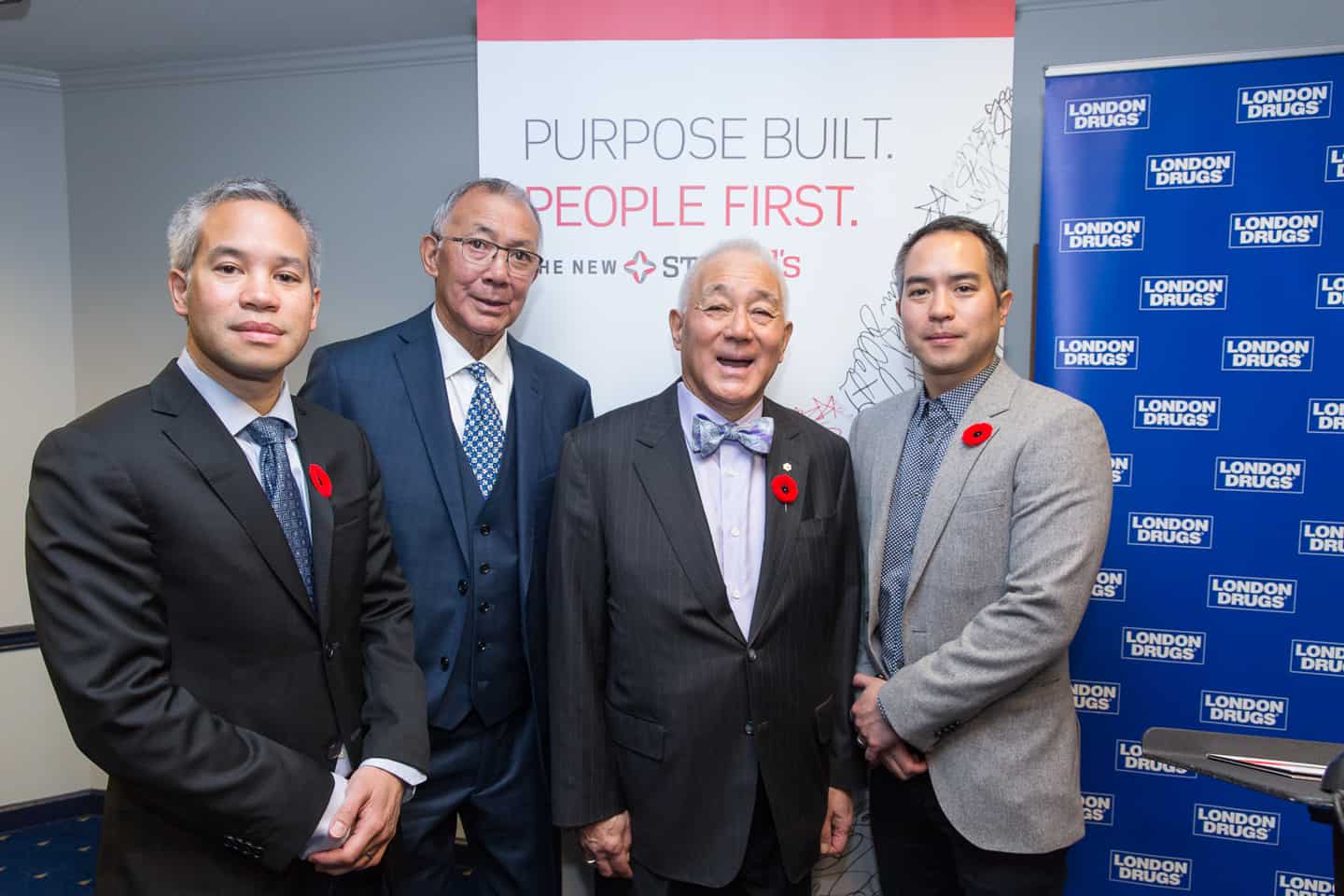
The Louies (owners of London Drugs) are another family with deep roots at PHC, giving both their time and their money. The relationship dates back more than 40 years to when Tong Louie first stepped up to serve on the board of St. Paul’s Hospital. In the 1990s, Tong Louie’s generosity established the first Tong Louie Cardiac Unit. The family’s giving legacy continues with the next generation of Louies, who supported an expanded Tong Louie Cardiac Wing at the new St. Paul’s – a lifeline for British Columbians in need of specialized cardiac care.
Community cares
An old proverb suggests that charity begins at home. But in our experience, it can also begin in the community. On the day that St. Paul’s opened, in 1894, a group called the Ladies of Charity served refreshments. By 1904, the well-to-do mavens were known as St. Paul’s Women’s Auxiliary. At their first community fundraiser in 1916, they collected an astonishing $2,700, almost $54,000 in today’s dollars.
This spirit continued in the 1980s, this time spearheaded by the Rotary Club of Vancouver. Rotary’s generosity enabled doctors at St. Paul’s to perform the first cochlear implant in Canada and to help establish the Rotary Hearing and Balance Centre, the provincial referral centre for complex ear and hearing-related disorders. To date, Rotary has given almost $1 million to help improve the lives of people with hearing and balance issues. The club’s ability to engage the community is reflected in its annual Ride for Hearing Bike-a-Thon. Now in its 34th year, participants cycle 120 km from Burnaby to Harrison Hot Springs.
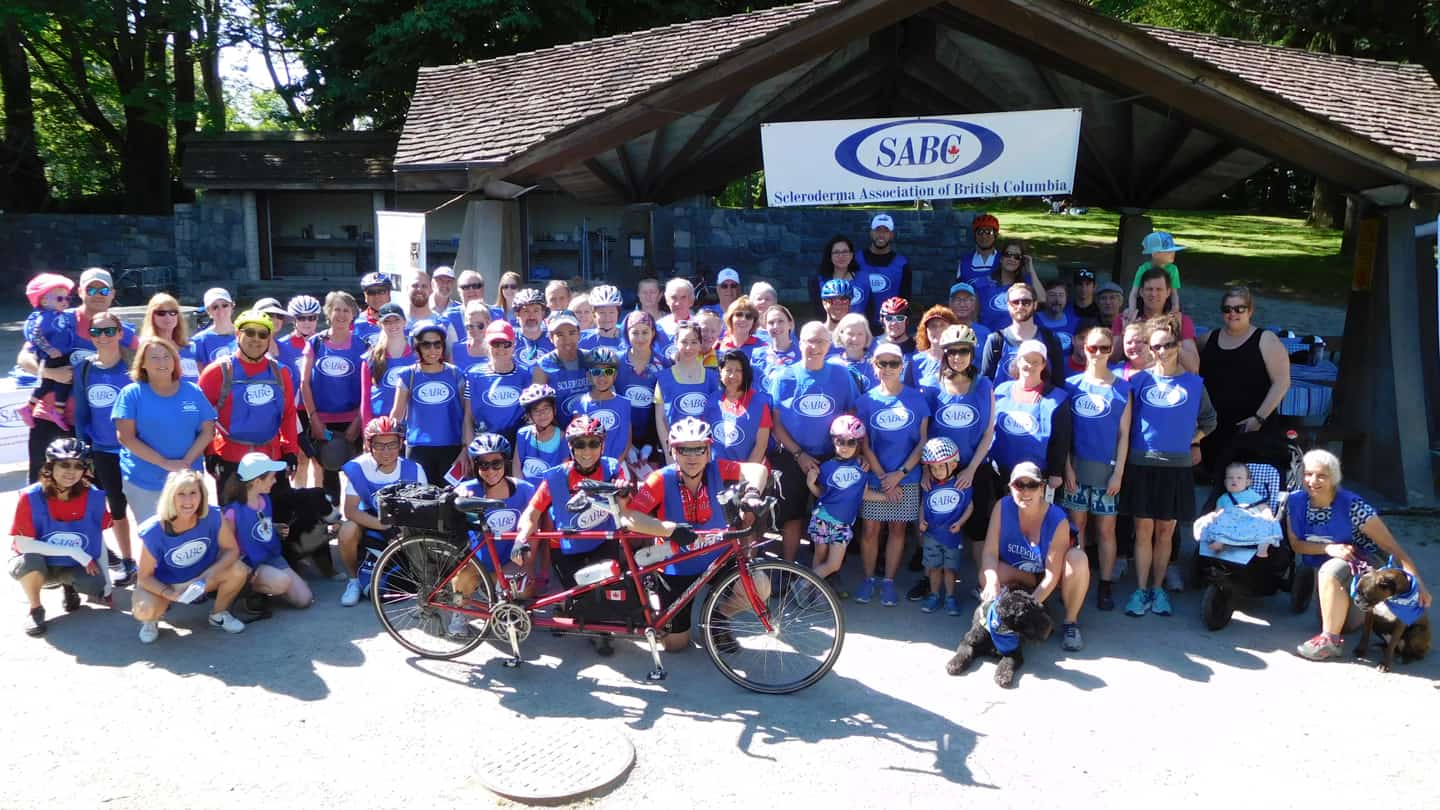
Another example of people-powered fundraising is the Scleroderma Association of B.C.’s annual Ride for Research in support of St. Paul’s Scleroderma Clinic. St. Paul’s is the only clinic in BC doing research into this chronic disease that hardens skin and connective tissues, often affecting other organs. The event is the brainchild of Rosanne Queen, who organizes and participates each year despite the severe loss of flexibility in her hands due to the condition. This grassroots initiative has raised more than $216,000 in its seven-year history.
We’re also inspired by the growing number of partnerships between the community and the corporate sector. One such collaboration is the enormously successful Scotiabank Feast of Fortune, a lavish gala in celebration of the Lunar New Year. The event raises money for Mount Saint Joseph Hospital (MSJ) by pairing the clout and generosity of Scotiabank with the energy and engagement of a group of tireless community philanthropists. In 12 years, they have raised $6.7 million for urgently needed equipment at MSJ.
If you’ve seen St. Paul’s during the holiday season, you know the most visible event on our fundraising calendar is Lights of Hope. But it’s more than just a beloved holiday tradition; it’s one of St. Paul’s most collaborative fundraisers. Built entirely by volunteers, the Lights bring the power of people and corporations together as donors, partners, and helpers. In 21 years, this unique partnership has raised more than $37 million.
Team Providence
The legacy of compassion and generosity kindled by the Sisters may be best exemplified by PHC’s own staff.
As the global leader in the treatment of HIV/AIDS, Dr. Julio Montaner’s research is truly inspirational. His vision and innovation have inspired many donors to rally behind the cause and support this work including our local community, government, and global granting organizations. Thanks to this support, Montaner developed the revolutionary triple-drug therapy, highly active antiretroviral therapy (HAART), which changed HIV/AIDS from a fatal disease to a chronic, manageable condition.
Dr. Andrew Ignaszewski (perhaps best known as Dr. Andy) is interim head of the Department of Medicine at St. Paul’s and an influential partner to St. Paul’s Foundation. His expertise and warm personality have inspired millions in donations, with much of the support coming from his own appreciative patients. His efforts have helped St. Paul’s become a globally recognized hub of heart health innovation.
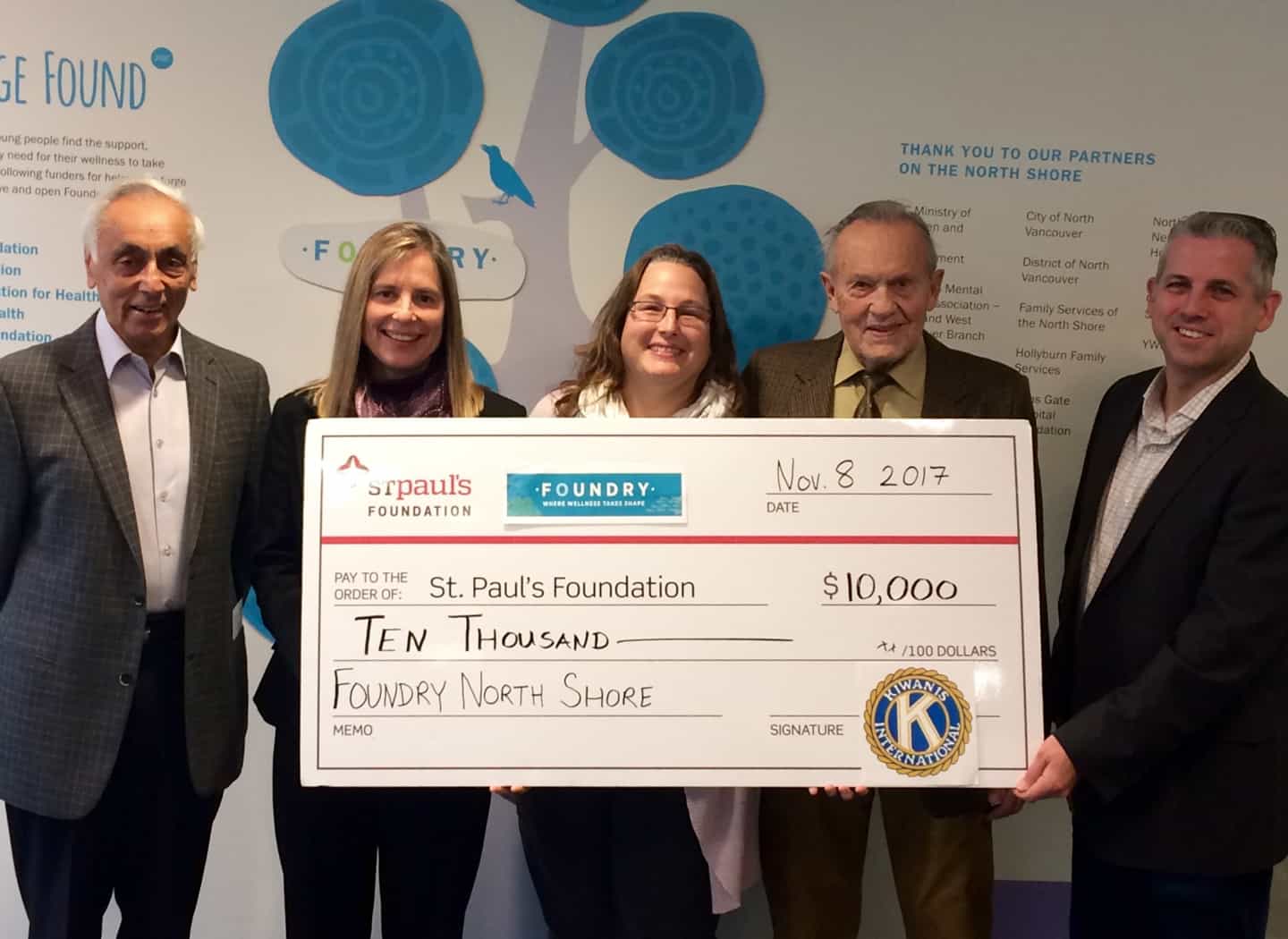
Dr. Steve Mathias is another philanthropic hero. Mathias, a psychiatrist, noted the large number of youth coming into St. Paul’s Emergency Department with complex mental illness and substance use challenges. His ideas blossomed into Foundry: a province-wide network of seven sites (with four more in development) providing a one-stop shop for at-risk youth to access primary care, mental health, substance use, social services, and peer support. His efforts have garnered generous support from companies, foundations, and individuals who want to help vulnerable youth find care and connection.
In 2017, Dr. Evan Wood, an addictions medicine specialist, established the BC Centre on Substance Use (BCCSU) at St. Paul’s. Inspired by Wood’s tireless quest for answers and solutions to the current opioid crisis, many passionate donors have stepped up to support the BCCSU. In two years, it has become the leading national and international authority in addiction medicine.
For 125 years, we have been grateful for every single donor and every single gift.
Your donations save lives, drive innovation and research, and provide outreach and support for our most vulnerable patients. The truth is, your gift is so much more than a donation.
It’s a promise that together, we will change and improve lives across the city, in communities around the province, and, of course, at the new St. Paul’s. Thank you for your support. Thank you for your trust. And thank you for investing in the future of health care.
Help support the next 125 years of innovation, research, teaching, and compassionate care at St. Paul’s. Donate now.
